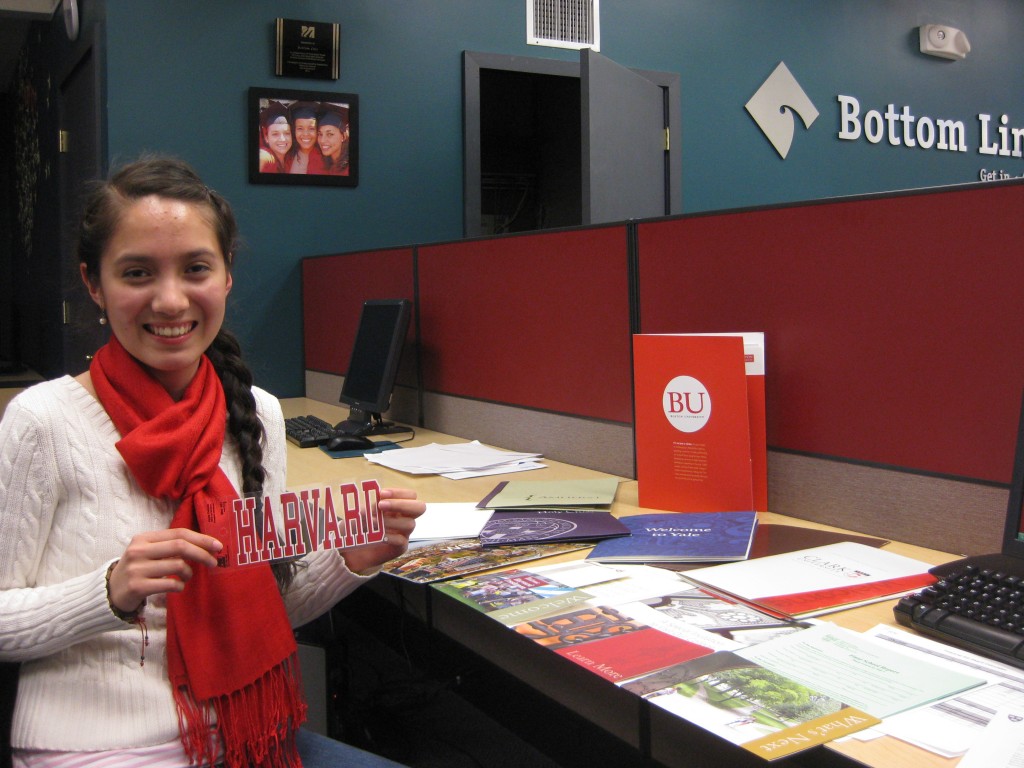by Michelle Barton
With a poverty rate of over 12 percent in the United States, it is often difficult to find a way to achieve economic mobility. One way of doing so is earning a college degree.
According to a 2016 study by Georgetown University, the majority of the jobs still go to bachelor’s degree graduates. Reporting on the study, CNN Money noted that “of the 11.6 million jobs created after the Great Recession, 8.4 million went to those with at least a bachelor’s degree.” While getting a college degree is a solution to landing a higher-paying job, it is not easy to do.
This challenge disproportionally impacts Black and Latino males compared to their peers. Only 37 percent of Black males and 47 percent of Latino males who started at a four-year public institution in 2010 completed a four-year degree within six years, compared to 60 percent of all students. Exacerbating these challenges, young men of color often face prejudice and a wide range of systemic barriers that limit their choices including school discipline and policing policies that target this population.
One of the greatest barriers to college completion is cost. For students who come from low-income backgrounds, the cost of college can seem impossible. With the amount of misinformation regarding college affordability – misunderstandings about which colleges are affordable, the belief that giant student loans are unavoidable, continually changing processes and deadlines – many students don’t know where to start.
While students are busy applying to college, they are also faced with the task of applying for aid – a bureaucratic process riddled with punitive deadlines and confusing paperwork. Financial aid is integral to the success of the students we serve. We have found that many students leave college because they cannot afford it – and it is our mission for our students to not only get into college but to graduate with a degree. Beyond that, we want them to achieve economic mobility after college, something made very difficult if a student is left with significant debt.
Our Access program is primarily focused on affordability because the aid process is challenging to navigate alone, and choosing an affordable school is a marker for college success.
College affordability is a more significant barrier for Black and Latino students than for other students. Recent research shows that 49 percent of Black students and 36 percent of Latino students defaulted on their college loans at least once over the course of 12 years, compared to only 21 percent of White students and 11 percent of Asian students. Black and Latino students also had higher college loan balances over time than other students. Black students owed an average of 113 percent of the amount initially borrowed after 12 years, and Latino students owed an average of 83 percent while White students owed just 65 percent.
This context provides the impetus for Bottom Line’s collaboration with JPMorgan Chase’s The Fellowship Initiative (TFI), a program that supports the educational development of Black and Latino young men from low-income communities in Chicago, Dallas, Los Angeles, and New York City. As a college access and persistence organization, Bottom Line is well-positioned to support these young men in persisting through college. The results of a randomized control trial of our model demonstrate that our program has significant impacts on college and persistence rates for Black and Latino students. Across our three service areas in Boston, New York, and Chicago, we currently serve over 1,600 Black and Latino male college students.
So, how do advisors and students work together to make affordable college choices?
The first service we provide our students is to review the list of colleges they are interested in and make suggestions for additional schools to research based on the student’s academic profile, interests, and preferences. Part of this process also involves reviewing the family’s financial information.
We suggest schools that are likely to be affordable for the student based on last year’s award letters for students with similar financial profiles. The FAFSA uses family size, income, assets, and benefits to calculate an Expected Family Contribution (EFC) for each family. The majority of our students have a 0 EFC, which means that they qualify for the maximum amount of need-based financial aid.
We prioritize schools that will ask the student to invest less than $8,500 over their EFC from FAFSA (including loans). We have found through analyzing data that students who tried to pay more than $8,500 over their EFC were significantly less likely to finish their degree. This often means recommending full-need colleges and/or low-cost commuter schools for the students who may not qualify for full need-based financial aid. We give every student an estimate of how much each college on their list will ask them to invest for their first year and encourage them to apply to a variety of colleges we feel confident they will be accepted to and be able to afford.
The next step in our process is to collect the financial aid deadlines and requirements for each of our most popular colleges for the upcoming academic year. This can be a time-consuming process, as it can be challenging to decipher how up-to-date the information might be on the individual college’s websites. Many of our team members work together to divide up schools and call financial aid offices to ensure we have the correct deadlines for each piece of the financial aid process. This step has become even more critical now that FAFSA is available beginning in October, rather than January, of each year. More and more colleges are moving their financial aid deadlines to December, or even November. Making sure we have all of this information compiled by the end of October means that we can help students make a plan for submitting financial aid applications before their earliest deadline, and helps our advisors see which of their students need to receive financial aid services first.
We know that affordability services do not stop with FAFSA completion. We hold ourselves accountable to verifying that each FAFSA is fully processed after submission and that students and their families receive support in completing all other steps of the financial aid application process. We do our best to make sure that students understand what is expected of them and their families, and collect income documents as early in the year as possible to minimize delays in submission. Additionally, all financial aid applications that are completed in our office go through multiple layers of quality control where a specially-trained employee reviews each application, in addition to the student’s advisor.
Once our students begin to receive financial aid letters, we often find ourselves acting as advocates for them. We double-check that they have received all of the need-based aid they are eligible for and help students follow up with financial aid offices they are waiting to hear back from. It is essential to highlight that this is not the first time we have talked to our students about affordability.
While we have occasionally seen students have luck appealing for more aid or applying for scholarships in the Spring, the reality is that these options are unlikely to turn a $25,0000 balance into a $2,500 balance, which is why we insist that they apply to multiple schools that are likely to ask for a reasonable investment.
At this point in the process, our role is to make sure each student understands the total “free money” (grants and scholarships), loans, and out-of-pocket payments each college is expecting for the year. We provide our students with tools to have conversations with their families about how much they can sustainably afford and explain their options for payment outside of a lump-sum, like a payment plan.
Our data suggest that Bottom Line advising does lead Black and Latino male students to make more affordable choices: Black and Latino males in Bottom Line’s Access program tend to apply to affordable colleges more often than to unaffordable colleges. Specifically, Black and Latino males served by Bottom Line’s Access program class of 2017 applied to an average of 6.3 more affordable colleges, compared to an average of only 1.7 less affordable colleges, and 2.7 least affordable colleges. The majority of Bottom Line students also get accepted to and choose to attend more affordable colleges. Of the 2017 Bottom Line Success Program class, 80 percent of Black and Latino males enrolled in schools that Bottom Line deems more affordable. Another 14 percent attended less affordable schools, and only 6 percent enrolled in schools that were deemed least affordable
Bottom Line believes that affordability begins with a solid college list and early conversations with our students about maximizing the number of affordable options. We work tirelessly to help our students fulfill every one of their colleges’ requirements ahead of the deadlines, and advocate for them to ensure they receive every penny of financial aid they are eligible for. Our individualized approach to decision-making means that each student can commit to a college confident that they will be able to afford the school not just for one year, but for their entire college career.








